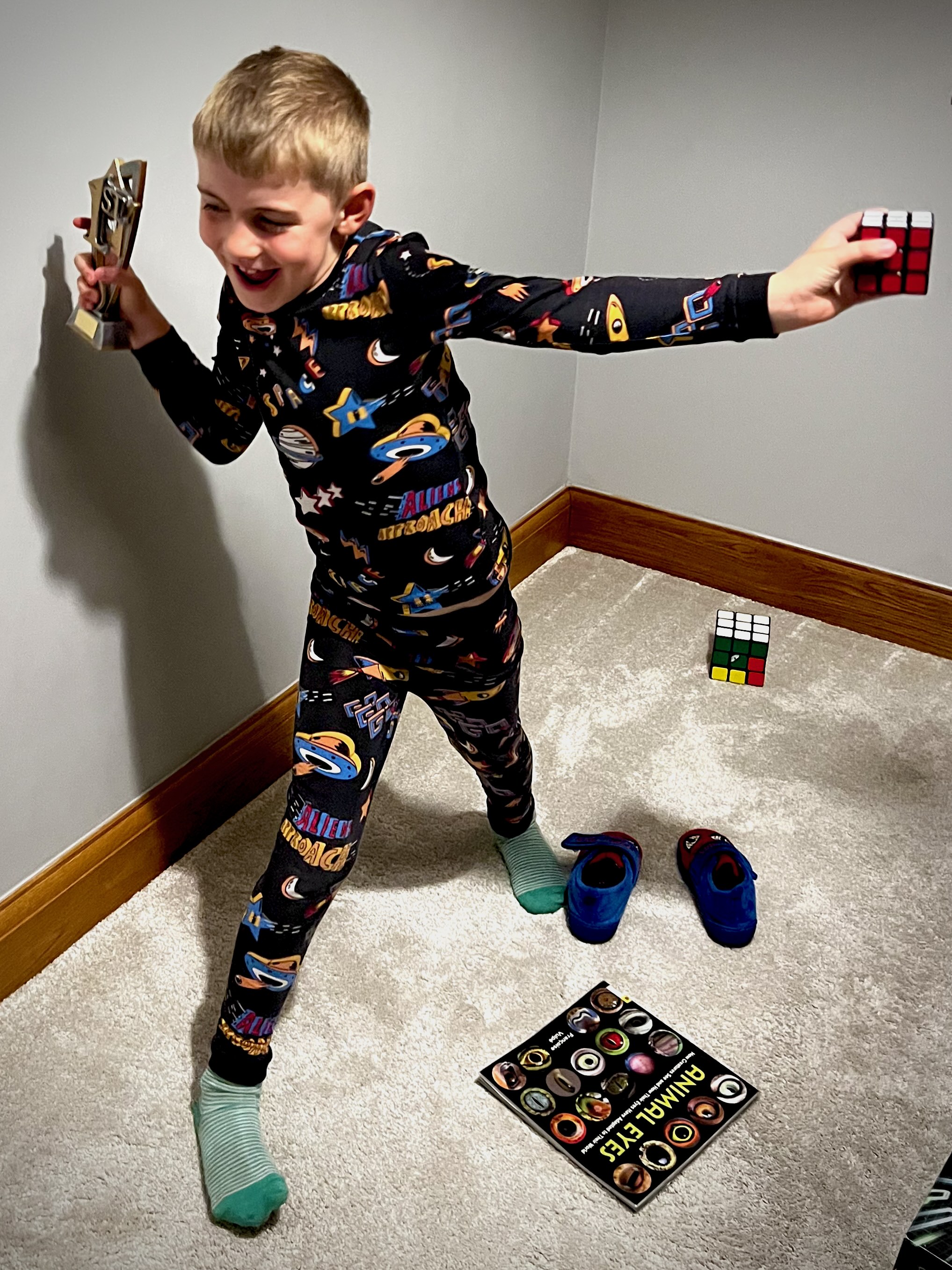Inspired by “Cubing from the Corner Office” by Meghan Walsh, published in Korn Ferry’s Briefings Magazine. You can read the original article here.
In the world of business, we’re often faced with challenges that seem as intricate and tangled as a Rubik’s Cube. Emmanuel Pacheco, a sales executive at Google and Guinness World Record holder for solving the iconic puzzle, believes that the Cube offers more than just a mental workout — it’s a model for tackling complex business problems. In Meghan Walsh’s article, Pacheco shares that “everything is interdependent” when solving the Cube, and he draws a parallel to the interconnected nature of corporate decision-making. His approach has inspired leaders around the world to think differently about obstacles in the workplace, breaking them down into manageable steps and working within fixed constraints to achieve alignment and success.

As I read Walsh’s piece, I couldn’t help but think about my own experience with the Rubik’s Cube. When my son got his first Cube a couple of years ago, I knew that at age five, he wouldn’t be able to solve it on his own. I decided I would learn it myself so I could teach him, and it became a labour of love. Through our evening sessions, I guided him, teaching him the steps and sharing in his joy as he persevered, step by step. Just recently, he solved the Cube entirely on his own for the first time! Watching him make the connection between effort and success was inspiring, and I can see him on his way to becoming a speed cuber himself.

Rowan’s first solve
There’s something deeply satisfying about knowing that each centre on a Rubik’s Cube stays fixed while you work to rearrange the other pieces around it, and it reminds me of how business leaders navigate around the “centres” of their own organizations. As Pacheco puts it, businesses have their own fixed realities—such as laws, policies, or resource limitations—and we’re constantly working within these guides to bring about change and meet goals.
One aspect of the Rubik’s Cube that resonates with me is the idea that there’s no single way to solve it. You could rely on memorizing algorithms, as many speed cubers do, or you could experiment and feel your way to the solution. This flexibility in approach parallels how we address business challenges. Sometimes the answer lies in following a proven method, and other times, it requires intuition and innovation. The Cube also builds muscle memory, as we start to recognize patterns that help us solve it more efficiently over time. I’ve noticed that solving complex problems in my own work similarly builds “business muscle memory,” making the process more intuitive and efficient as we encounter familiar patterns.
There’s one final insight from the Rubik’s Cube that has stayed with me: you may need to break one side to solve another. On the Cube, sometimes achieving the next layer requires disrupting something you’ve already aligned. As Pacheco explains, “It’s not about solving the problem. It’s solving what is in front of you.” This echoes true in business as well; occasionally, you have to undo certain processes or decisions to reach a new, more effective solution. In the same way, taking a step back can be just as vital in finding that next great outcome, as it allows you to view the full picture and adjust as needed.
In many ways, the Rubik’s Cube offers a powerful analogy for life and business, encouraging us to focus on what’s in front of us, step by step, and to remain flexible, intuitive, and resilient as we work toward our goals.
